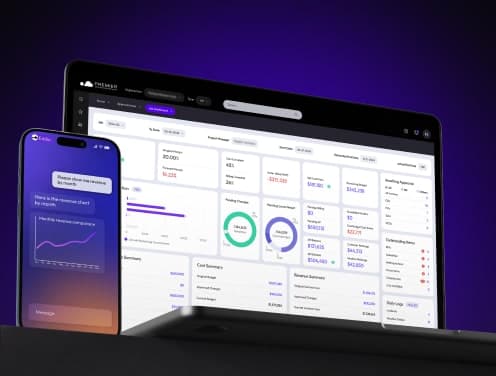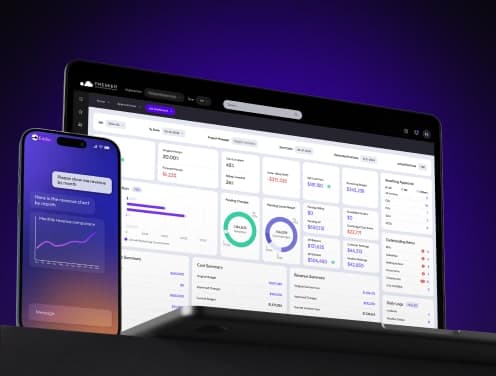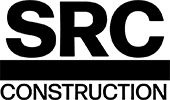
How to Prevent Construction Cost Overrun: Expert Methods That Actually Work
Did you know that nine out of ten construction projects go over budget, with costs typically exceeding estimates by 28%?
That's not just a minor inconvenience—it's a crisis affecting construction companies of all sizes. In fact, construction cost overruns have become so common that surpassing the budget is almost considered an expected part of the construction narrative.
The financial strain is real. Projects frequently exceed their budgets by 20% to 30%, which can damage both the bottom line and reputation. What's worse, construction profit margins fell by 27% in early 2023 as companies struggled with labour shortages and material costs.
So, what's behind these budget disasters? Weather conditions cause 60% of cost overruns worldwide, while design errors lead to 38% of construction disputes. Add poor communication—which tanks one-third of projects—and you've got a perfect storm of budget-busting factors.
We've spent years analyzing what works to prevent these financial nightmares. In this article, we'll share proven methods that successful construction companies use to stay on budget while maintaining quality and timelines. These aren't theoretical concepts—they're battle-tested strategies you can implement on your next project.
Understand What Causes Cost Overruns
1. Inaccurate cost estimates
The foundation of any successful construction project begins with accurate cost estimation. Unfortunately, according to the National Cooperative Highway Research Program, construction estimating errors cost U.S. companies approximately $273 billion annually. These errors stem from multiple sources:
- Incomplete or outdated data used for calculations
- Overly optimistic assumptions that ignore real-world complexities
- Failure to account for potential risks and market uncertainties
Minor estimation errors multiply dramatically in large projects. For instance, if the cost of one window in a skyscraper with 20,000 windows is overestimated by just $50, the project becomes $1 million more expensive.
2. Scope creep and design changes
Scope creep occurs when project requirements gradually expand beyond the original plan. Research indicates that this common issue often leads to budget overruns, schedule delays, and stakeholder dissatisfaction.
The primary drivers behind scope creep include:
- Poorly defined scope at the beginning of construction
- Client-initiated changes during execution
- Miscommunication about project goals
- Budget constraints forcing compromises
Even minor changes accumulate quickly. When the scope is poorly defined, misunderstandings about what to accomplish push the project in unintended directions. Additionally, attempting to please clients by accepting small changes without proper documentation can ultimately compromise the successful completion of a project.
3. Poor risk planning
Construction risk management is more complex than in other industries. While manufacturing projects mainly face labour and supply shocks, construction risks are dynamic and unpredictable.
According to the Construction Industry Institute, there are approximately 107 construction risks to consider when managing a project. Inadequate risk assessment often results in:
- Carryover legacy issues that burden the entire project lifecycle
- Reliance on those managing risks to report them, creating delay cycles
- Insufficient transparency for governing bodies overseeing the project
Effective risk management requires identifying opportunities early through brainstorming sessions with stakeholders.
4. Delays from weather or approvals
Weather-related disruptions cause significant financial strain. Adverse weather conditions affect approximately 45% of construction projects globally, resulting in billions of dollars in additional costs.
When weather necessitates work stoppages:
- Project timelines extend, increasing labour costs, equipment rentals, and overhead expenses
- For a $50 million project delayed by 30%, additional costs could reach nearly $15 million
- Material damage requires costly repairs and replacements
Furthermore, regulatory approval delays create contractual disputes regarding time extensions and compensation, potentially escalating into legal battles.
5. Supply chain and labour issues
The construction industry currently faces unprecedented supply chain disruptions. Construction input costs have risen 38.7% compared to February 2020, with some materials like iron and steel increasing more than 50%.
Delivery timelines have also expanded dramatically:
- Materials like steel and timber that once took 2-4 weeks now require 12-16 weeks
- Electrical switchgear and generators can take 42-60 weeks
- Transformers may require up to 52 weeks to arrive on-site
Compounding these issues is a significant labour shortage. The industry needs to recruit more than half a million workers to meet demand, with nearly two million construction workers expected to leave their jobs this year.
Plan Smarter Before You Build
Planning can slash your risk of construction cost overruns. Projects with proper planning stay 6.5% under budget, whereas poorly planned projects exceed costs by an average of 3.3%.
1. Use historical data for better estimates
Many construction companies overlook their most valuable asset—historical project data. Without leveraging past information on requirements, costs, and productivity, teams rely on assumptions rather than facts. This leads directly to budget overruns and missed optimization opportunities.
Historical data proves especially valuable during early project phases when detailed designs aren't available. By analyzing previous similar projects, you can develop cost models based on specific parameters like capacity, operating temperature, or materials used.
Smart contractors utilize their accounting systems to collect this data, then leverage it to inform competitive bids. Historical square foot costs serve two critical functions:
- Creating quick conceptual estimates (+/-20%) for customers
- Verifying subcontractor pricing and detailed estimates
Premier Construction Software makes accessing historical data simple with features that allow estimators to review past project information with just a click, eliminating the struggle with disorganized Excel sheets.
2. Align stakeholders early
Stakeholder alignment means getting everyone—owners, designers, contractors, subcontractors, financial institutions, and regulatory bodies—on the same page regarding project goals and expectations. This alignment must start before construction begins.
Research proves this approach works: teams demonstrating early alignment deliver cost performance 6.5% below budget. Conversely, projects failing to communicate business objectives underperform by 3.3% on cost and 24.5% on schedule.
Early engagement helps prevent misunderstandings and conflicts by establishing clear communication channels. Regular progress meetings create opportunities for updates, feedback, and problem-solving.
3. Build contingency into your budget
A construction contingency is money set aside for unexpected costs. Most experts recommend budgeting 5-10% of total project costs for contingencies, although the exact percentage depends on the risk level and the number of unknowns.
Construction projects typically include three types of contingency funds:
- Owner contingency (for scope changes, design modifications)
- Contractor contingency (for unforeseen means and methods issues)
- Design contingency (typically 5-10% of construction cost)
Contingencies provide crucial risk management benefits. They establish cash reserves for unpredictable issues without covering avoidable mistakes or scope creep. Your contingency budget should clearly document how funds can be allocated and include transparent tracking processes to ensure accountability.
4. Define the scope clearly in contracts
A clearly defined scope establishes the boundaries of your construction project—what's included, what's excluded, and what the final deliverable looks like. This clarity eliminates ambiguity that could lead to disputes, costly delays, and change orders.
Effective scope definitions include:
- Detailed work activities for all contractors and suppliers
- Standards, regulations, and special requirements
- Responsibilities of each party
- Project objectives and deliverables
- Payment schedules
Make your scope SMART: Specific, Measurable, Achievable, Relevant, and Timely. Review it regularly and maintain excellent communication with everyone involved, particularly when changes become necessary.
Remember—even small projects benefit from clear scope definitions. Since the scope details payment expectations and other crucial information, nobody will question what to expect during construction.
Control Costs During Design and Procurement
Beyond planning, intelligent cost control during design and procurement phases prevents budget disasters. These four methods make the most significant impact on your bottom line.
1. Apply value engineering early
Value engineering is not just cost-cutting—it's a systematic method for improving value by balancing function against cost. Implementing this approach early yields the most significant savings, as changes become increasingly expensive later.
The most effective value engineering follows a straightforward process:
- Information gathering: Collect project specifications and requirements
- Function analysis: Determine what each component needs to accomplish
- Creative exploration: Brainstorm alternatives that maintain function
- Evaluation: Assess ideas for feasibility and value
- Development: Refine promising alternatives
- Presentation: Share findings with stakeholders
Importantly, value engineering in early design stages allows greater savings without affecting deadlines. For federal buildings, value engineering studies typically occur twice: once at concept design completion and again after design development.
2. Use BIM to catch issues before they cost you
Building Information Modelling (BIM) creates detailed 3D project models that help teams spot potential design conflicts before breaking ground. This visualization capability makes BIM invaluable for preventing costly rework.
When contractors leverage BIM for material cost analysis or energy modelling, they identify areas to save without compromising quality. This becomes most critical for mechanical, electrical, and plumbing systems—typically the biggest project cost centers.
Subsequently, BIM enables teams to compare the model against actual installations through laser scanning or augmented reality, helping them determine if the work is ahead, behind, or on track. Discovering delays earlier makes them cheaper to address.
3. Prequalify vendors beyond price
Prequalifying subcontractors and suppliers reduces project uncertainties and risks. Rather than selecting vendors based solely on price, evaluate:
- Qualifications and experience
- Financial stability
- Safety records
- Licensing compliance
- Insurance coverage
Many contractors postpone prequalification until after they have won bids, but this common practice often leads to delays and profit losses. Consider using construction-specific software to streamline vendor evaluation and store qualification data for future projects.
4. Lock in pricing with smart contracts
Smart contracts—self-executing agreements coded on blockchain technology—automatically execute predefined actions when conditions are met. For example, they can release payments upon milestone completion without manual approval.
The benefits extend beyond automation. Smart contracts minimize payment delays—a significant pain point for contractors. They also reduce the need for intermediaries, such as escrow agents, thereby lowering administrative costs.
Additionally, these contracts reduce disputes through clearly outlined terms that execute automatically based on real-time data. All contract information remains permanently recorded and tamper-proof, ensuring accurate documentation of payments and work completion.
Track and Adjust During Construction
Even with perfect planning, construction projects need constant monitoring once work begins. Real-time tracking and quick adjustments prevent minor issues from ballooning into significant cost overruns.
1. Monitor daily progress and costs
Daily progress monitoring allows you to spot discrepancies between planned and actual performance immediately. When teams carefully track project schedules against actual progress, they avoid work being performed out of sequence. This prevents costly rework and resource waste.
Premier Construction Software lets you track costs against predetermined outcomes, helping identify if too many uncompleted objectives remain within your budget constraints. This early detection allows implementation of cost-saving measures before small overspending becomes a financial disaster.
2. Manage change orders with a transparent process
Change orders modify your original contract, altering project scope, schedule, or cost. Without proper management, these modifications can derail your budget.
Implement a structured change order process, including:
- Clear documentation of scope changes
- Accurate assessment of cost impacts
- Realistic timeline adjustments
- Proper signatures from all parties
Moreover, maintain an open dialogue between stakeholders throughout the change order process to minimize impacts on project cost and schedule. Remember that frequent changes can strain relationships and negatively impact job site morale, ultimately affecting work quality.
3. Reallocate resources when needed
Effective resource management enhances project success by minimizing downtime and optimizing workflow. When you notice potential issues, quickly reallocate labour, equipment, and materials to prevent cascading delays.
Indeed, strategic planning enables early risk identification and the creation of solutions that mitigate disruptions. Your resource management strategy should remain flexible—ready to pivot when unforeseen problems arise.
4. Use mobile tools for real-time updates
Construction apps empower professionals to work efficiently from anywhere. Mobile tools eliminate the hours spent driving to deliver inspection forms or updates, allowing field teams to log progress directly from job sites.
Successful implementation begins with small pilot projects involving your most tech-savvy team members. Teams adopt mobile-friendly apps three times faster than desktop-heavy solutions. GPS-enabled time clocks and photo documentation features have reduced payment disputes by 90% for some contractors.
5. Keep communication tight across teams
Effective communication serves as the cornerstone of successful construction project management. Regular meetings and check-ins keep teams aligned while providing opportunities to address issues promptly and effectively.
Nonetheless, construction communication faces significant challenges due to the presence of numerous teams and dynamic environments. Defining a transparent communication chain ensures everyone knows who to contact for specific updates, allowing information to flow smoothly to the right people.
Train Your Team to Think Financially
Financial expertise isn't just for your accounting team—it's a crucial skill for everyone involved in construction projects. Studies show that project managers with strong financial understanding consistently deliver better economic outcomes.
1. Teach site supervisors cost awareness
Site supervisors make daily decisions that directly impact your bottom line. Consequently, they need to understand how their choices affect project finances. Practical cost awareness training should focus on:
- Identifying potential risks and developing contingency plans
- Managing daily costs while maintaining quality
- Understanding how material selection impacts the overall budget
When supervisors grasp these concepts, they're better equipped to control project costs and manage risks without sacrificing quality.
2. Build financial literacy in project managers
Financial literacy allows project managers to make informed decisions regarding project economics. This knowledge helps them:
- Assess project budgets realistically
- Forecast expenses accurately
- Optimize resource allocation
A solid grasp of financial principles enables better decision-making by providing clarity on the economic implications of various choices. In construction management specifically, financial decisions can make or break a project's success.
3. Reward teams for staying under budget
Create incentive structures that motivate teams to think financially. A typical program might qualify team members for bonuses when they increase project profitability by a minimum of 2%. Consider structuring rewards where:
- Basic responsibility means completing projects at expected profitability
- Bonuses kick in only when teams exceed expectations
- Rewards increase proportionally with improved profitability
This approach encourages teams to increase profits either by reducing costs, increasing net profits, or expanding scope while maintaining profitability.
Key Takeaways
Construction cost overruns affect 90% of projects, but implementing proven prevention strategies can help you join the elite 10% that stay on budget while maintaining quality.
• Plan with data, not assumptions: Use historical project data for accurate estimates and build 5-10% contingency funds to handle unexpected costs without derailing budgets.
• Catch problems early through design control: Apply value engineering and BIM modelling during design phases when changes are still affordable, not after construction begins.
• Monitor daily and adjust quickly: Track progress and costs in real-time using mobile tools to spot discrepancies immediately before minor issues become significant overruns.
• Train teams to think financially: Develop cost awareness in site supervisors and project managers, then reward teams for staying under budget to create financial accountability.
• Control scope creep with transparent processes: Define project boundaries precisely in contracts and manage change orders through structured documentation to prevent gradual budget expansion.
The key is to implement these strategies systematically across all project phases—from initial planning through to completion. Companies that consistently apply these methods transform cost overruns from inevitable disasters into preventable challenges, protecting both profit margins and professional reputations.
FAQ
Q1. What are the main causes of construction cost overruns? The primary causes include inaccurate cost estimates, scope creep, inadequate risk planning, delays due to weather or approvals, and supply chain and labour issues. These factors can significantly impact project budgets and timelines.
Q2. How can construction companies improve their cost estimation accuracy? Companies can improve estimation accuracy by utilizing historical data from past projects, aligning stakeholders early in the process, incorporating contingency into budgets, and clearly defining the project scope in contracts. These practices help create more realistic cost projections.
Q3. What role does technology play in preventing cost overruns? Technology like Building Information Modelling (BIM) and mobile tracking tools play a crucial role. BIM helps catch design issues early, while mobile apps enable real-time progress and cost monitoring, allowing for quick adjustments to prevent overruns.
Q4. How important is financial literacy for construction project teams? Financial literacy is critical for all team members, not just accounting staff. Site supervisors and project managers with strong financial understanding make better daily decisions that impact the bottom line. Training teams to think financially and rewarding them for staying under budget can significantly improve project outcomes.
Q5. What strategies can be used to manage change orders effectively? Effective change order management involves implementing a clear process that includes detailed documentation of scope changes, accurate cost impact assessments, realistic timeline adjustments, and proper approvals from all parties. Open communication throughout the process is also crucial to minimizing impacts on project cost and schedule.





















